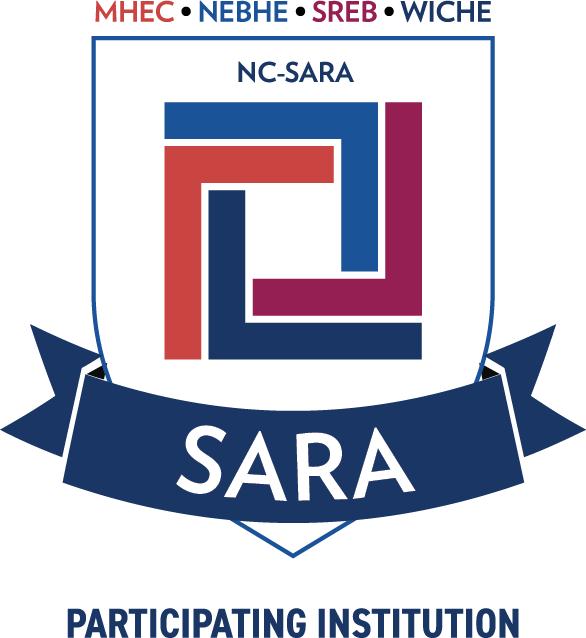Hawaii Medical College may accept credits transferred from accredited institutions recognized by the Federal Department of Education. Only courses passed with 3.0 / B or better and taken within the last five (5) years will be considered for other outside educational institutions. Students requesting credit transfers from outside educational institutions are required to submit a completed Transfer of Credit Request Form along with a copy of the syllabus/course description for the applicable courses to the Director of Education. The transcripts and outline will be reviewed to determine whether at least 75% of the course content is comparable. If determined to be comparable, the class is transferred, and the student will not have to take that course at HMC, and the credits will apply to those required to complete the program.
For prior HMC students, the HMC classes will be accepted if taken within the last 10 years with a C or better grade. The classes will automatically be transferred into their new enrollment.
There is a 50% program residency requirement for all courses transferred. That is, a maximum of 50% courses can be transferred (50% of courses completed towards diploma must be Hawaii Medical College courses). *No charges will apply to transfer of credit courses
Students wishing to request the transfer of credit must complete and submit the Transfer of Credit Form to the appropriate Director of Education (Campus Live or IDL) at least one (1) week prior to the module in which the course is offered.
Students should be aware that the transfer of courses is determined by the receiving institution, and therefore cannot be guaranteed by Hawaii Medical College. Students considering transferring to an unaffiliated school have the responsibility to determine whether that school will accept Hawaii Medical College courses. Hawaii Medical College encourages students to make this determination as early as possible.
Hawaii Medical College does not imply, promise, or guarantee transferability of its courses to any institution.
The federal department of education no longer categorizes accrediting agencies as regional or national.
On November 1, 2019, the Federal Department of Education released final rules and regulations regarding Accrediting Agencies. As per the Federal Register / Vol. 84, No 212: “In general, these final regulations will simplify the labeling of agencies to better reflect their focus. Therefore, the Department will no longer categorize agencies as regional or national; we will instead include them under a combined umbrella identified as “institutional” or “nationally recognized.” The terms “regionally accredited” and “nationally accredited” related to institutional accreditation will no longer be used or recognized.”
https://www.govinfo.gov/conten
Hawaii Medical College is accredited by ACCET the Accrediting Council for Continuing Education and Training. ACCET is a U.S. Department of Education Recognized Agency.
It’s our goal to remove as many roadblocks as we can for our students. One concern for many students is finding flexible, affordable childcare so that they can attend school. Our Student Services department can help you. They can connect you with programs that offer subsidies for different aged children. Among those available are PATCH, Childcare Connection, Pre-school Open Doors, and others!
We want you to be successful while in school and after you graduate. Our Career Services department works with students and graduates individually for career guidance and employment assistance counseling. We’re here for you immediately after you graduate and into your future — whenever you need us.
If you’re looking for a job while in school, Hawaii Medical College is here for you. Our flexible schedules make it possible to be working while attending getting your education. Our Career Services department works with students individually for employment assistance counseling.
Yes. If you are awarded any scholarship, please notify your financial aid advisor and the business office to readjust your award and payment plans. This means that if your scholarship covers any out of pocket costs, we can potentially decrease your loan amount.
No. Typically you have a six (6) month grace period from your last day of attendance (regardless if you withdraw, graduate, or get academically dismissed) before you begin any payments for loans.
Payments for loans will not be to the school, but to a loan servicer that is randomly assigned to you (Examples of those different loan servicers you can get assigned to are: Navient, FedLoan, Great Lakes, Nelnet, etc.).
No. Parents are not responsible for the Federal Direct Subsidized/Unsubsidized Loans. Students do not need to have a cosigner on those loans either, even if they are under the age of 18 because the “defense of infancy” does not apply to federal student loans.
If a parent is responsible for a loan, it would be the Federal Parent PLUS loan. Not all parents will qualify for the PLUS loan. As mentioned above, generally the student and the student alone is responsible for repaying any and all of their educational loans.
No. Completing the FAFSA looks at what funding you are eligible for. It is completely up to you if you want to take out a loan or not. Importantly, the FAFSA is just to see what you qualify for. This same rule also applies to any grants you qualify for. Though you qualify, you are not required to request for any of it.
Yes. Many students feel that they don’t qualify for aid, possibly missing out on financial aid opportunities by not applying at all. The FAFSA stands for Free Application for Federal Student Aid. It does not hurt to see what you do qualify for. The FAFSA is the main application for both grants and loans. Without the FAFSA, students are not qualified for any financial aid.
You must apply for federal student aid for every school year that you attend. To reapply, you should submit a Free Application for Federal Student Aid (FAFSA). If you submitted a FAFSA last year, and you are eligible to complete a Renewal FAFSA, you may choose to have most of the questions pre-filled with the information you provided. Simply updating the information for the new school year on a Renewal FAFSA may be faster. However, the Renewal FAFSA is available solely for your convenience. If you prefer to start fresh with a new FAFSA, you are free to do so.
You may be eligible for some of the federal, state and private financial aid programs, including:
- Scholarships and Military
- Loans
- Grants
- Work Study
- Payment Plans
Financial Aid Loans and Grants:
Loans are borrowed funds that MUST be repaid with interest.
Grants are different from student loans. Grants are funds that are typically awarded based on financial need, and grants don’t have to be repaid.
Financial Aid Federal Work Study Program:
- Federal Work Study is a program that provides both on and off campus based jobs to students with financial need, so that you can earn money to help you pay for your education expenses.
Payment Plans:
- Payment plans may be available to you. Please contact a financial aid advisor for more information.
For the Federal Direct Subsidized or Unsubsidized Loan, the current origination fee (after 10/1/2020 and before 10/1/2023) is 1.057%; for Direct Parent PLUS Loans, the origination fee is 4.228%. This percentage will be automatically deducted from the amount that you are going to request for.
During the 2012-2023 Academic Year, the interest rate for the Federal Direct Subsidized or Unsubsidized Loan is 4.99%; for Direct Parent PLUS Loans, the interest rate is 7.54%.
- Gather all your documents, such as your 1040 Federal Tax Forms and W2(s).
- Create an FSA ID at studentaid.gov. The FSA ID gives you access to Federal Student Aid’s online systems and can serve as your legal signature. If your parents are required to provide information on the FAFSA, they must also apply for an FSA ID. (NOTE: If you have previously applied for a Personal Identification Number (PIN), it will no longer be requested. The PIN has been replaced with the FSA ID as of May 10, 2015.)
- Complete the FAFSA on the WEB Worksheet and enter the information on studentaid.gov
To be eligible for financial aid, you must have the the following:
- You MUST have a high school diploma or the recognized equivalent of a high school diploma.
- You MUST be accepted or enrolled as a CLASSIFIED student seeking a degree or certificate at Hawaii Medical College. Hawaii Medical College must be listed as your “Home Campus.” You must be enrolled at least half time to be eligible for Financial Aid.
- You MUST meet the terms of Hawaii Medical College Financial Aid Office Satisfactory Academic Policy (SAP).
- You MUST be a U.S. Citizen or eligible non-citizen.
If you meet the eligibility requirements above, your next step is to apply. If you have any questions or need help, contact the Financial Aid Office in person, by phone, or email.





